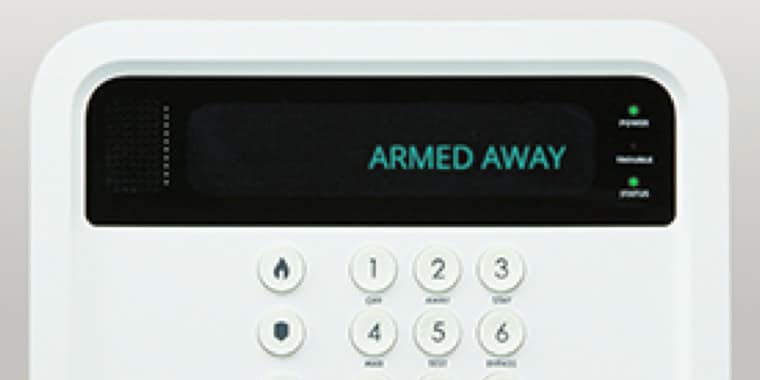Do you have a road trip planned? Chances are you've made a list of everything you need to do and pack before you embark on a road trip, but have you thought about the steps you should take to make sure you stay safe?
There are several safety-related tasks that deserve a top spot on your road trip checklist, regardless of whether you're making a multi-day drive or just trekking across the state.
Here are some of the things you should do before and during your trip to keep yourself, your family and your car safe on a long drive.
https://youtu.be/NSlbYQccXHs
Use this handy road trip checklist before hitting the road!

Click to Download
Schedule a checkup
It's a good idea to take your car in for a quick inspection before a long trip—especially if your vehicle is more than 10 years old.
"Drivers may skip taking their car in for an inspection, hoping to avoid an expensive repair bill," says John Nielsen, AAA's managing director of Automotive Engineering and Repair.1 "But, when you factor in the cost of an interrupted trip, having a vehicle inspected and proactively repaired will cost much less in the long run."
Mobil recommends checking the following areas before a long trip:2
- Oil levels
- Transmission and differential fluids
- Engine coolant
- Tire pressure and treads
- Braking system
- Battery condition
Pack for the worst case scenario
You've probably made a list of things to bring on a road trip: music, car games and so on. But have you thought about the safety items you should bring as well? No one ever plans to break down on the road, but it happens to millions of people every year.
In addition to a first-aid kit and spare tire, Safe Motorist recommends packing extra water and snacks, jumper cables, flares, maps, a tool kit, cutting tool, chains and waterproof matches.3 You may also want to bring a portable phone charger, safety triangles and, of course, your AAA card (if you have one).
On the Road
Your safety to-do list doesn't end once you head out on your journey. Follow these tips while on the road to reach your destination safely.
Use a GPS Tracker
Many road trippers use a GPS tracker to let loved ones keep tabs on their journey. This can be especially helpful if you break down somewhere and there's no cell service, as someone will know where you are and can send aid.
Alternatively, you can use a service like ADT SoSecure to share your location. ADT SoSecure also lets you contact emergency services with one push of a button—an extremely helpful feature in emergencies.
Switch Drivers
If possible, you should try to switch drivers every few hours during your trip. Make sure to stay hydrated and snack on energizing foods to keep yourself in prime driving condition.
Further, experts recommend skipping the late afternoon shift and catching some z's instead: "'Try to avoid driving between 1 and 3 p.m., when the body's temperature is lower and people are naturally drowsy,'" Dr. Michael Breus suggests to Nationwide.4
Practice Patience
Most drivers have experienced frustration on the road at one point or another, but it's essential to remain calm and be patient while driving long distances in unfamiliar areas.
"'It's completely normal for drivers to experience anger behind the wheel, but we must not let our emotions lead to destructive choices,'" Jake Nelson, AAA's director of Traffic Safety Advocacy and Research, tells Psychology Today.5 "Don't risk escalating a frustrating situation because you never know what the other driver might do. Maintain a cool head, and focus on reaching your destination safely," he adds.
Stay off the Phone
Finally, familiarize yourself with the cell phone laws in each state you're passing though—according to the National Conference of State Legislatures, 16 states currently ban hand-held cell phone usage while driving and 47 prohibit text messaging.6
Even if it is legal to use your phone where you're traveling, it's best to make calls during your pit stops so you can keep your eyes on the road while driving. Parents magazine explains the part of your brain that processes moving images decreases activity by up to one-third when you're talking on the phone—meaning you're much more likely to miss something.7
By following these safety tips and packing these things to bring on a road trip, you'll be prepared for whatever the journey throws at you, and you can make the most of your upcoming adventure.
Resources
1. "Double Digits Means Double Trouble for Vehicle Breakdowns." AAA. April 17, 2018. Accessed May 24, 2018. https://newsroom.aaa.com/2018/04/double-digits-means-double-trouble-vehicle-breakdowns/
2. Robinson, Aaron. "Car Maintenance Checklist for Road Trips" Mobil™ Motor Oils. Accessed May 24, 2018. https://mobiloil.com/en/article/travel-and-safety/travel-tips/car-maintenance-checklist-for-road-trips
3. "5 Essential Road Travel Tips You Don't Already Know." Safe Motorist. Accessed May 24, 2018. http://www.safemotorist.com/articles/Travel_Tips.aspx
4. "9 Tips for Long Drives." Now from Nationwide. October 23, 2017. Accessed May 24, 2018. https://blog.nationwide.com/9-tips-long-drives/
5. Vitelli, Romeo. "How Common Is Road Rage?" Psychology Today. July 20, 2016. Accessed May 24, 2018. https://www.psychologytoday.com/us/blog/media-spotlight/201607/how-common-is-road-rage
6. "Cellular Phone Use and Texting While Driving Laws." National Conference of State Legislatures. April 30, 2018. Accessed May 24, 2018. http://www.ncsl.org/research/transportation/cellular-phone-use-and-texting-while-driving-laws.aspx
7. Bernstein, Monica, and Ingela Ratledge. "12 Safety Tips for Your Next Road Trip." Parents. December 06, 2017. Accessed May 24, 2018. https://www.parents.com/fun/vacation/ideas/7-safety-tips-for-your-next-road-trip/





